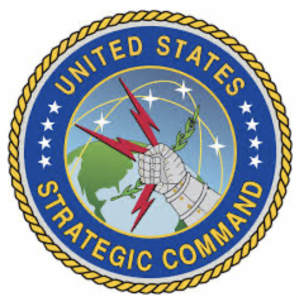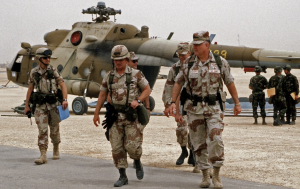In the late 1980s the Cold War seemed to be coming to an end, and my work as a nuclear weapons designer was about to lose a lot of significance. My boss at the Lawrence Livermore Laboratory asked me to take an assignment at the Pentagon to be the nuclear weapons advisor to the Secretary of Defense, and I did. It was during those two years at the Pentagon that I realized that Congress was going to end nuclear testing. I knew enough about nuclear weapons that without testing, one does not design and develop a nuclear weapon. When I returned to the Lawrence Livermore Laboratory, I took over two groups within the Analysis Division and I had to come to grips with the fact that we would no longer be designing nuclear warheads.
One of the missions of my analytical groups was to design a more effective nuclear weapons complex for the country. So, I had a group of experts who knew how to build a nuclear weapon from scratch. I held a meeting with my analysts and said that instead of analyzing how to better build an American nuclear warhead, I wanted to know how to stop a foreign country from creating one. To get things started, I went to see a midlevel bureaucrat in the Department of Energy and got a grant for two hundred thousand dollars to study how North Koreans were trying to build a nuclear weapon. The year was 1993.
We completed the study in six months and briefed the DOE official on what we had done with the grant money, and he was pleased. But I couldn’t expect to keep getting grants from him. So, I put together a briefing and began to show it to officers in the Joint Staff of the Pentagon. During my time at the Pentagon, I had built up a small coterie of friends on the Joint Staff who knew my background, and they spoke to their bosses about the work I had set out to do. I came to the attention of the newly appointed director of a brand-new Office of Counterproliferation headquartered in the National Defense University. He in turn introduced me to a very intelligent chief of staff of the House Armed Services Committee who was very interested in having the Defense Department conduct counterproliferation operations. He liked what I had to show him. The US Strategic Command (STRATCOM) had just opened a staff position within its Strategic Planning section to deal with counterproliferation, and Congress sent funding to it with a proviso to use the funding to support my program. It was the start of a program I called the Counterproliferation Analysis and Planning System (CAPS).

Now, having a more or less solid source of funding, I began to put together a team of analysts. I was careful to get some of the best talent I could recruit within the country. I particularly wanted chemical engineers who had extensive experience building production plants. I took my time and over the course of two years I put together an impressive group of engineers who understood process engineering. The group leader was a chemical engineer who had designed ninety-nine chemical plants around the world during his career. I also hired a chemical engineer from Chevron Corporation who had just retired as their chief designer of petrochemical plants. I brought in a biotech engineer who had designed the factory in Bakersfield, California that produced the bacteria sprayed on farm fields through California’s Central Valley; the bacteria is a cousin of the bacteria used to make the biological agent Anthrax. Then, too, I brought in the missile engineer who was the program leader for building the third stage of the Trident Missile system. These and other experts became the core of CAPS.
Once the program was established, I had to get the combatant commands to use it. (The Goldwater-Nichols Act of 1986 established “combatant commands,” in which regions of Earth were segmented by geo-location into military commands. Each of these Headquarters has a particular mission in their own region as they protect and defend U.S. interests. The combatant commanders become experts in those regions and by strengthening defense capabilities and making contacts in their own designated region, they are able to provide intelligence for and response to incidents in that region. For instance, Central Command held responsibility for the Middle East – during the Gulf War, General Schwarzkopf commanded Central Command, which is why he commanded US troops.)

Our baptism of fire, if you will, was during the Kosovo conflict. The way CAPS presented a country that posed a security threat to us was to thoroughly analyze its manufacturing capabilities, and using intelligence information, locate manufacturing sites within the country that could support a national WMD program. Then we presented how dropping ordnance on selected sections of those sites could cause significant collateral damage. Basically, we showed planners how to stop undesired activities without causing unwanted hazards. Air Force units in European Command had targeted and bombed a suspected chemical agent manufacturing plant and had caused liquid mercury to spill into the Danube River. It was an ecological and public relations disaster. Eventually, someone asked the Air Force why they hadn’t used CAPS in their planning, and that’s when the Air Force learned about CAPS. Once they became familiar with the program, the Air Force became a solid promoter of the program.
The commander of STRATCOM, Admiral Richard Mies (USNA ’67), greatly appreciated the work we did. He had a vision of adjusting the mission of his command to address the threat of proliferation, and he made CAPS an essential part of his new mission. To make better sense of his vision, he invited me to join him to Tampa to visit the commander of the Special Operations Command (SOCOM), General Charles Holland (USAFA ’68), and to brief the staff of SOCOM about CAPS. I remember standing before the two commanders and the senior staff of SOCOM, there must have been fifteen stars pinned to collars sitting around a conference table and showing them what we could do in counterproliferation. My briefing worked, and eventually SOCOM took over sponsorship of the program.
Especially in the beginning of the wars with Iraq and Afghanistan, CAPS was used extensively. We were asked not only to analyze and locate possible WMD program sites, but to also locate manufacturing sites in the war theater that could cause an environmental threat to troops in their vicinities. For instance, many small cities had fertilizer plants that possessed large storage tanks of ammonia, a highly dangerous chemical to breathe. During Operation Iraqi Freedom, we identified over four hundred sites that posed dangers to advancing Army units.
I led the CAPS program for seventeen years before moving on with my career at the Laboratory, and I am proud of what the program accomplished. At least on two occasions, data from CAPS was given to a US President to guide him with making decisions about combat operations. The program was cited by the Secretary of Defense as being the department’s premier counterproliferation planning tool.
Thanks, Tom, what a great article on a very effective program you led. Thanks for sharing your memories … well done!
Thanks, Tom. That was a fascinating inside look at something I had never heard of before. The many and varied things that we classmates have done with our lives is quite astounding. My guess is you probably ranked a whole lot higher in academics that I could have ever hoped for.
Thank you guys. To be honest, I am not a chemical engineer and I don’t feel very smart, but I was smart enough to know good work when I saw it. The rest was just making sure we got the work done, and that we were doing what was useful to the commanders.